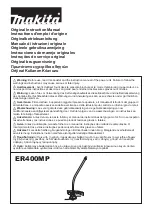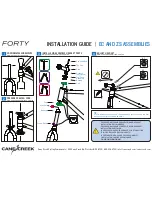
DOC: SPII2CHDWBrief - V2.71 07/25/2017
PAGE 6
Sensor Power
The sensor can be powered using the SPI/I2C interface cable, method is recommended when
using the interface; however power can be applied using a USB power only cable. To select
SPI/I2C as the power source, connect Pin 4 (Select SPI/I2C Power) to Pin 6 (Power). Pin 4 may
also be connected as a control line and will function at the same voltage levels as the data lines.
Unless it is indicated otherwise in the specific sensor data sheet, the recommended supply
voltage is 4.65 to 5.35 volts. Maximum supply voltage is 5.5 volts, damage level is 5.95 volts.
Additional specifications can be found in the individual sensor’s data sheet.
Data Line Electrical Specifications
The data, clock and control lines on LB5900 sensors use 3.3 volt logic levels, however as inputs,
they are 5 volt tolerant. This means that the sensor can also be used with control systems
running at 5 volts if the controller inputs are compatible with 3.3 volt logic levels. Other specific
compatibilities include LVCMOS 3.0V to 3.6V; TTL.
Commands, Data Transmission & Reception
Messages are transmitted to and received from the sensor using standard textual SCPI
instructions and queries. Please refer to the
Programming Guide For LadyBug True RMS
Generation II Sensors
for command details. Data is transmitted and received in full bytes (8-bits)
using standard ASCII codes; however header information described later may be in binary form.
In general, SCPI commands sent USB, I2C or SPI are identical. There are however some exclusions
and limitations. The SPI and I2C interfaces do not accept concatenated commands. The SPI and
I2C interfaces limit the length of strings to 4095 bytes, this places limits on certain commands
requiring large amounts of data such as reading stored unattended memory (Sensors with Option
UOP).
By IVI- SCPI definition, data length (number of bytes) can vary on messages returned from the
sensor. To accommodate this specification and provide status and command information, a 4-
byte binary header is sent at the beginning of messages. Messages may have additional header
information (in full byte multiples) to provide information required for I2C or SPI purposes.
Please refer to the header information in the SPI or I2C sections.
Sensor Reset and Communication Port Reset
●
While in the I2C mode, the communication port can be reset by pulsing the SPI/I2C enable line
(Pin2). This connection must be active (high) when power is applied to use I2C or SPI. Pulsing the
line low for 100ms or longer, then returning it high, will cause the I2C module to be cleared and
reset. This Pin should be tied to Sensor power in SPI mode.
In SPI Mode, while the clock line remains in the inactive state, pulsing the Slave Select line low
twice for 1ms resets the Sensor’s SPI module and issues a sensor DCL command. It is
recommended that this be done at power up to eliminate erroneous data. The module can also
be reset by holding the Slave Select line low for greater than one second while the clock line
remains in the inactive state.







































